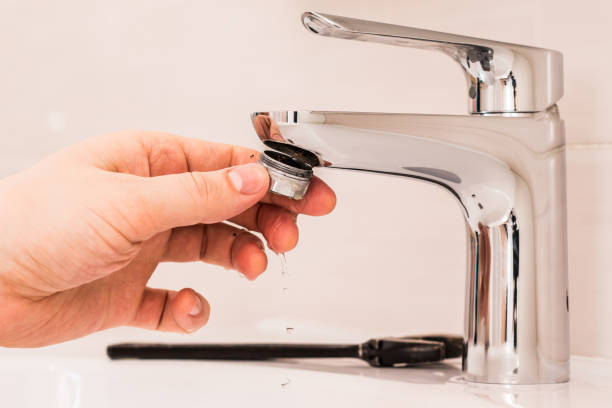My Significance of Correcting a Malfunctioning Faucet
My Significance of Correcting a Malfunctioning Faucet
Blog Article
The publisher is making a few good annotation related to Leaky Faucets: Why They Happen & What to Do About Them in general in this post further down.

Leaking taps may feel like a small aggravation, however their effect goes beyond just the nuisance of the audio. From wasting water to sustaining unnecessary financial expenses and wellness dangers, overlooking a trickling tap can bring about various consequences. In this write-up, we'll look into why it's vital to address this typical house concern without delay and effectively.
Wastefulness of Water
Ecological Influence
Dripping faucets add significantly to water wastefulness. According to the Epa (EPA), a single tap leaking at one drip per secondly can lose greater than 3,000 gallons of water per year. This not only pressures water sources yet additionally impacts communities and wildlife depending on them.
Financial Expenses
Increased Water Expenses
Past the ecological influence, leaking faucets can inflate water expenses considerably. The collected waste gradually converts into greater utility expenditures, which can have been stayed clear of with prompt repairs.
Possible Residential Property Damages
Additionally, extended dripping can bring about damage to components and surface areas surrounding the faucet. Water accumulation can create discoloration, corrosion, and even architectural concerns if left unattended, causing added repair costs.
Wellness Worries
Mold And Mildew and Mold Development
The constant visibility of moisture from a dripping faucet produces an excellent atmosphere for mold and mold growth. These fungis not just endanger interior air top quality however likewise posture wellness dangers, especially for people with breathing problems or allergic reactions.
Waterborne Illness
Stagnant water in leaking taps can become a breeding ground for germs and various other microorganisms, increasing the threat of waterborne diseases. Pollutants such as Legionella germs thrive in stagnant water, possibly bring about severe illnesses when ingested or inhaled.
DIY vs. Expert Repair service
Benefits and drawbacks of DIY Repair
While some might attempt to take care of a trickling faucet themselves, do it yourself repairs include their own collection of obstacles. Without proper knowledge and tools, do it yourself efforts can intensify the issue or result in insufficient repair work, prolonging the problem.
Benefits of Working With a Specialist Plumber
Hiring an expert plumber makes certain that the underlying source of the leaking faucet is dealt with efficiently. Plumbing technicians have the experience and equipment to diagnose and repair faucet problems efficiently, saving time and minimizing the danger of further damage.
Step-by-Step Guide to Taking Care Of a Dripping Tap
Devices Needed
Prior to attempting to repair a leaking tap, collect the needed devices, including a flexible wrench, screwdrivers, substitute components (such as washing machines or cartridges), and plumber's tape.
Usual Faucet Issues and Their Solutions
Identify the kind of tap and the certain issue causing the drip. Typical issues include damaged washers, rusty valve seats, or damaged O-rings. Refer to supplier instructions or online tutorials for detailed support on repair services.
Safety nets
Regular Upkeep Tips
To avoid dripping faucets, do routine maintenance such as cleansing aerators, checking for leaks, and changing damaged components immediately. Furthermore, take into consideration setting up water-saving tools or updating to much more efficient components.
Relevance of Prompt Services
Attending to dripping faucets as quickly as they're seen avoids more water wastage and prospective damage, inevitably saving both water and money over time.
Impact on Home Worth
Understanding of Well-Maintained Property
Keeping a building in good condition, including addressing maintenance concerns like dripping taps, improves its perceived worth and value amongst prospective customers or lessees.
Influence on Resale Value
Features with well-maintained plumbing fixtures, consisting of faucets, command higher resale worths in the realty market. Resolving trickling taps can contribute to a positive impact throughout residential or commercial property inspections and settlements.
Environmental Responsibility
Specific Payment to Conservation
Taking duty for taking care of trickling faucets straightens with wider initiatives towards water conservation and ecological sustainability. Every individual's actions jointly make a substantial influence on preserving priceless sources.
Lasting Living Practices
By prioritizing prompt repair services and embracing water-saving practices, individuals contribute to lasting living practices that benefit both present and future generations.
Conclusion
Resolving a trickling tap surpasses mere benefit; it's a necessary action toward preserving water, decreasing monetary costs, and securing health and building. Whether with DIY fixings or specialist aid, acting to fix dripping taps is a tiny yet impactful means to advertise accountable stewardship of sources and add to a healthier, much more sustainable future.
How to Fix a Dripping or Leaky Faucet
A leaking faucet is one of the most common problems that homeowners encounter, but it being commonplace doesn’t make it any less annoying. The constant drip drip drip of a leaking bathtub faucet, showerhead, or sink tap can disturb your home’s serenity. Left neglected, a dripping faucet can also result in higher water bills and discoloration or mold growth in your sink or plumbing fixtures.
Fortunately, you don’t have to be a trained plumber to know how to stop a dripping faucet. With some basic tools, replacement parts, and a little patience, leaky faucet repair is a breeze. In this article, we’ll explain what causes dripping faucets and how you can fix them.
What Causes a Leaking Faucet?
Kitchen and bathroom faucets come in all manner of designs, but most involve some combination of valves, O-rings, seals, and washers. The O-ring is usually the weakest link, but any one of these pieces can wear down over time. Heat, moisture, temperature fluctuations, minerals, mold, and movement can contribute to warping and corrosion, breaking the watertight seal. This just comes with the territory of being a homeowner. Everything is always subject to wear and tear, and some component parts of your appliances and fixtures need to be replaced on occasion. At least replacement O-rings are cheap!
More rarely, dripping faucets can be a symptom of excessively high water pressure. Were this the case in your home, you would probably notice that the leak is not isolated to one faucet. Water pressure issues are harder to resolve on your own. We recommend contacting a professional plumber if you suspect your water pressure is too high.
How to Fix a Dripping Faucet
Pipe wrench or monkey wrench Allen wrench set Screwdrivers Old towel or rag Shut off the water.
Before you do anything, you need to turn off the water to keep from drenching your kitchen or bathroom. You should find a valve under the sink and against the wall. Once you’ve turned this valve, try turning the faucet on to confirm that the water source has been cut off.
If you can’t locate your local valve for the faucet you’re working on, you can always shut off the water to the house at the main valve. Of course, this will prohibit anyone from using the sinks, showers, or toilets while you’re working on the faucet that’s giving you trouble.
Plug or block the drain.
You’ll be disassembling the faucet and removing some small bits of hardware. Plug the drain with a stopper or rag to avoid the possibility of a small screw falling into your P-trap.
Take apart the faucet assembly.
There are several varieties of kitchen and bathroom faucets, each with its own manner of assembly. For detailed instructions on how to disassemble your faucet, you can refer to the fixture’s manual or contact the manufacturer. If you know whether you have a ball, disc, cartridge, or compression faucet, you can find detailed schematics online.
In general, you need to begin by removing the faucet handles. You might notice a small screw that you’ll need to remove with a screwdriver or Allen wrench. If you don’t see any visible securing hardware, it’s likely hidden under a decorative cap that can be unscrewed or popped off with flathead screwdriver.
Remove each piece methodically, consulting a schematic when necessary. Take notes or arrange the pieces in such a way to make it easier to correctly reassemble the faucet later.
Remove the cartridge.
Once you’ve removed the handles and securing hardware, you should be able to remove the valve cartridge or stem. Some cartridges will slide right out. Other faucet models will require you to loosen a nut with a pipe wrench before you can remove the valve stem.
Examine the exposed hardware.
With the cartridge or stem removed, inspect the component parts. Check the rubber O-rings for wear and tear. Also examine the seat washer for corrosion or other damage. These pieces are usually the responsible parties for a dripping faucet, but it’s worth inspecting the other component parts while you have the faucet disassembled.
Find replacement parts.
Once you’ve identified which faucet component has failed, find an identical replacement. Your local hardware store should have O-rings, seat washers, and other standard components in stock. If you have a luxury or uncommon faucet, you may have to contact the manufacturer for a replacement part.
It’s a good idea to take your old parts with you to the hardware store so you can compare them with the store’s inventory and be sure you’re purchasing the correct replacement.
Reassemble the faucet.
With your new parts in hand, reconstruct the faucet and handles. Don’t be tempted to overtighten screws or nuts. You might think this could create a better seal, but it can instead damage or bend a delicate part of the assembly and create a new problem for you.
Turn on the water and test the faucet.
The only thing left to do is test your work. Unplug the sink, turn the water back on, and try the faucet. Congratulate yourself on a job well done!
https://www.libertyhomeguard.com/how-to-fix-a-dripping-or-leaky-faucet/

I'm very interested in What Causes Leaky Faucets & How To Fix Them and I really hope you appreciated the entire blog post. Enjoyed reading our post? Please quickly share it. Let someone else find it. Thank you so much for your time invested reading it.
Report this page